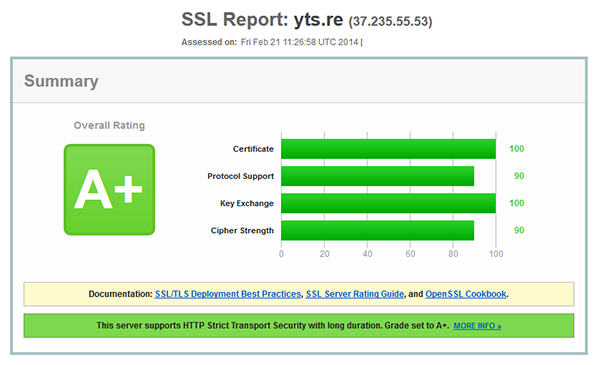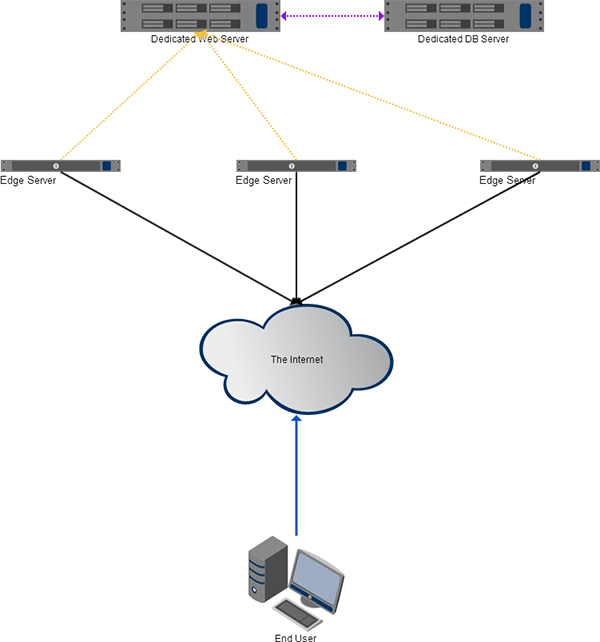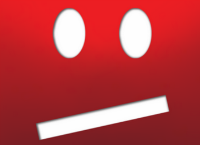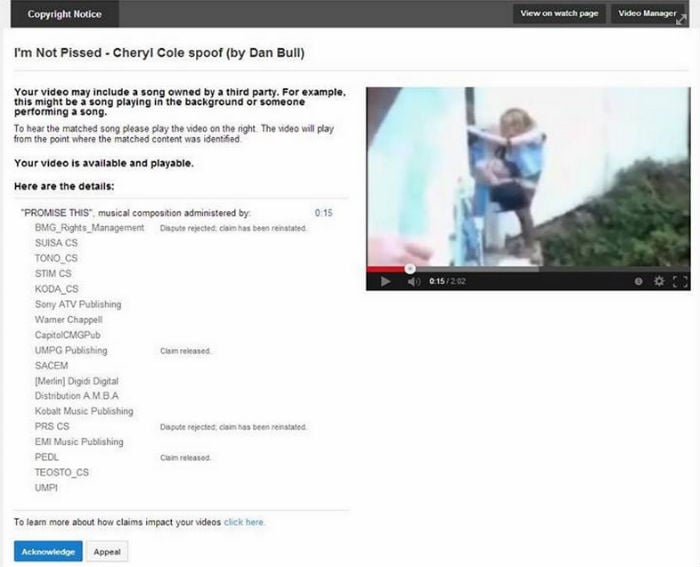TorrentFreak Email Update |
- Revealed: The Secrets of YIFY-Torrents’ Network
- Why YouTube’s Automated Copyright Takedown System Hurts Artists
- “Artists Should Think, Instead of Spewing Misplaced Spotify Hate”
| Revealed: The Secrets of YIFY-Torrents’ Network Posted: 23 Feb 2014 03:39 AM PST
Speaking with TF, site developer Jduncanator says that since last month’s rebranding the team have been not only working on new features, but also making sure that existing processes are fine-tuned. The dev says that user experience at YTS is paramount. Don’t make users wait “Studies show that 100ms is how long you have for the user to feel like the task was instantaneous. One second is how long you have for the user's state of flow to remain uninterrupted (though the delay will still be noticeable). Ten seconds is how long you have before the user loses interest entirely and will want to multi-task while the task is completing,” JD explains. “That 100-1000ms sweet spot is something most web developers aim for, but whats even more surprising is that only around 5% will actually achieve that. An average visitor will spend between 30 seconds to 4 minutes on YTS, so each individual page load will make up a large proportion of their overall user experience. This is what we wanted to focus on heading into 2014.” Google-powered One key upgrade towards achieving that aim is the inclusion of a brand new protocol called Spdy (pronounced Spee-dy), a Google-developed protocol designed to shift web content. “Google’s new protocol enables extremely low latency round-trip times and compression of headers. All leading (up-to date) browsers support SPDY 3 and so now do our servers allowing for high speed access and connection to all of our site,” JD reveals. While most site visitors won’t have any idea that things have changed, JD says that behind the scenes that’s definitely not the case. Network infrastructure has undergone significant upgrades, enhancing not only speed but security and overall experience. Security “With the latest NSA revelations and with overall ‘security’ paranoia going through the roof we decided to revise our current security setup to see if we could do anything better – turns out we could,” JD says. “We used to have 2048-bit RSA keys. These by themselves don’t pose a security risk, but if we are to go by anything the NSA reports show, they could possibly have the technology to crack these more efficiently than the public. To be on the safe side, we decided to double the key size to 4096-bit RSA which effectively multiplied the amount of time to crack our encryption keys by 2³².” And then, despite our requests to keep things pretty simple, JD just couldn’t contain himself, detailing the site’s BEAST attack protection, OCSP stapling enabling and HSTS implementation. Needless to say, he’s passionate about the site and keeping it finely tuned – fortunately he doesn’t mind if those listening need to Google acronyms every two minutes either. “You can see a report of our SSL over here. We score an A+ and are in the top 3%, something even Google couldn’t achieve,” he proudly adds.
Network setup – On the Edge YTS operates two levels of network – Edge and Internal. The Edge network is an array of servers running the open source NGINX high-performance HTTP server and reverse proxy software. These servers are what users connect to when visiting the site. The Edge servers communicate with the servers on the Internal network, keeping the latter hidden from the public eye. “The idea of these reverse proxies is that they simply forward web requests to our ‘hidden’ network and then pass the response back to you. This means that all you ever see is our cheap web servers’ IP addresses and never our internal networks. It allows us to have large amounts of high capacity connections to gobble up any ‘naughty’ or attack packets trying to take down our site and allows us to get our static content (images) closer to our end users, improving page load time and overall User experience.”  “Because the closer you are to the server, the faster the connection, we obviously want as many servers as possible as close to as many countries as possible. In the last two days we have added 13 new edge servers all around the world. Up until then, we only had 9 edge servers located around Europe but we wanted to aim big and get our content closer to our users to obtain faster load times. We now have 22 Edge servers.” JD says that initially the YTS setup was modeled on Cloudflare’s, but now the site has servers in more locations than Cloudflare does. “With these now in place and serving content, you should immediately see an improvement in screenshot and static content load time as well as faster overall page load speeds if the Edge node is a reverse proxy,” he notes. Network setup – On the inside “Our Internal network is made up of a few dedicated servers that are located in a hidden location far away and never see a public internet request EVER,” JD explains. “There are many reasons behind this from mitigating DMCA issues and annoyances to DDoS and attack protection.” YTS runs two other main servers with 16 cores each, easily allowing them to cope with the traffic generated by the site’s users. All key infrastructure is in one location allowing for easier maintenance and backups. Perhaps understandably JD didn’t share any additional information on the Internal network and there is certainly no map indicating server location. However, the diagram below shows the YTS setup, with the user at the bottom communicating with the site’s Edge servers which in turn talk to the Internal setup consisting of a main web server and dedicated database server.
What is evident when speaking with JD is that the site’s operators are not only passionate, but also blessed with seemingly endless energy and enthusiasm. The upgrades detailed above are just the beginning too, with yet more tweaks to come. “Over the next few weeks we will be playing with our DNS settings to try and even out our load amongst servers and to make pings even LOWER. Updates to our DNS infrastructure now mean that all users will be given IPs for Edge servers that are closest to them and should provide the lowest pings possible. “We’ll always be looking for ways to improve user experience and we plan on optimizing site code over the next few months to try and obtain even more speed out of the site,” JD concludes. Source: TorrentFreak, for the latest info on copyright, file-sharing and VPN services. |
| Why YouTube’s Automated Copyright Takedown System Hurts Artists Posted: 22 Feb 2014 03:54 PM PST
Needless to say, this process is far from flawless. In the past we've covered countless false, inaccurate, and just plain hilarious DMCA claims, but YouTube’s takedown process is particularly problematic. As we have noted previously, YouTube copyright claims are in a class of their own, thanks to a one-sided notification system that has no evidentiary requirement. Nowhere was this more apparent than the Mega song takedown of late 2011, but it's a constant problem. The main issue is that automated bots don't (or rather can't) understand fair use, although to be fair, it's an area of copyright law most labels seem to want to ignore when it suits them, and one that won't be fixed until Lenz v Universal finishes its slow trip through the courts. But in the meantime, many artists are still stuck dealing with systems that ignore significant sections of copyright law in order to keep things under lock and key, artists like Dan Bull for example. Dan, as regular TorrentFreak readers will know, is an artist that relies heavily on fair use to create his music, and he recently gave fans an idea of just how much of a pain it can be. For his 2010 [NSFW] song "I'm not pissed", he reveals a screen-grab showing 18 separate claims that have been made against it. While some of them were released after being disputed, two of them, BMG Rights Management and PRS, rejected the dispute and stand by their initial claim. “It is up to me to prove myself innocent by asking eighteen different publishing companies through an automated system to revoke the automated claims. Each publisher has a month to reply, with no obligation to even do so. If even one of the eighteen publishers says ‘nope’ then it’s back to square one,” Bull explains. “Any financial loss or restrictions on my channel are entirely on me, and will not be compensated for once the claim is lifted. This has been going on since last year with no end in sight,” he adds. It's a situation that discourages new artists and stifles creativity. Despite the claims of the major labels, and until some actual consequences are introduced for false, inaccurate, or over-reaching claims, it's going to harm the greater creative world, just to enable the big guys to profit. Meanwhile, Dan has expressed his ire at YouTube in the way he knows best, through [again NSFW] song. And yes, he’s pissed now. Source: TorrentFreak, for the latest info on copyright, file-sharing and VPN services. |
| “Artists Should Think, Instead of Spewing Misplaced Spotify Hate” Posted: 22 Feb 2014 09:11 AM PST
Cassette tapes, recordable CDs and MP3 have all been described as a major threat to artists’ livelihoods, and with the surge of streaming services such as Spotify the broken record continues to play. Artists in particular have been spewing Spotify hate, claiming that it’s hurting their income streams. "We don't need you to do it. No artists needs you to do it. We can build the shit ourselves, so fuck off," Yorke said a few months ago in one of his many rants. Not all artists agree with this view though. The Flashbulb, aka Benn Jordan, is coming to Spotify’s defense and urges his fellow musicians to “think before they bitch.” “Really Thom? You've created a legal, royalty paying library of music that will allow me to literally listen to whatever artist I can think of, whenever and wherever I desire to?,” Jordan notes. “Because that's the one thing we, the people, the pirates, the innovators, could not do in the last 7 years when we had all the technology in our hands to do it. Our alternative to piracy has been listening to music encoded as YouTube videos, which is so hilariously ass-backwards that I still can't wrap my head around it,” he adds. Better Than Piracy According to Jordan, Spotify is the answer many pirates have been waiting for. “The real bottom line to every single issue in the music piracy debate is that people will turn to whatever is the most convenient, as long as it is affordable. I truly believe that the vast majority of music pirates in the Napster era weren't raiding the music industry like looters in a riot. They were simply acquiring music in a much more convenient way,” Jordan says. For millions of people Spotify is a better alternative than piracy. And just as importantly, it also allows artists to get decent compensation for their work. Why Hate Spotify? So why are all these artists complaining about the “miserable” compensation they receive from Spotify? According to Jordan, this is in part their own fault, as many artists have signed away most (or all) of their streaming royalties to their record label or distributor. Another group of artists simply lacks fans. If nobody is listening to your music on a regular basis, it’s not fair to expect a fat royalty check to arrive in the mail every month. Contrary to the complaining artists, Jordan says that Spotify has been doing very well for him in terms of revenue. In fact, it outperforms the money he receives from most other digital stores combined. Making a Spotify Living “I can tell you that Spotify has made me about 30% more than iTunes, Pandora, Amazon, Xbox Music, Google Play, eMusic, Rhapsody, Rdio, Deezer, MediaNet, Simky, Nokia, and MySpace Music combined in that period. Even if you tack on my checks from ASCAP to that long list, Spotify is still ahead,” he says. Spotify revenue alone now allows Jordan to pay his rent, and the numbers are increasing month after month whereas revenue from other services has remained flat. “Spotify alone, for the last 9 months or so, has paid for my rent in a 2 floor coach house with garage. But what is predictably notable, is that the numbers for Spotify are growing monthly, and have actually doubled from the first month to the last while sales on other platforms remained the same,” Jordan adds. The fact that Spotify revenue is growing much faster than other services has two reasons according to Jordan. On the one hand the streaming model generates income from casual listeners who previously used pirated channels. In addition, Spotify rewards artists who have a loyal and frequently listening fan base, as the payouts are per stream instead of the one-time fee traditional CD and MP3 sales bring in. As a result, Spotify now allows Jordan to fulfill his dream of being an artist who can focus on creating new music, instead of doing jobs on the side. “At the end of the day, that additional income has allowed me to almost completely scale back on television composing and concentrate hard, exclusively on writing and recording new material. For the first time in my life, I'm able to be ‘The Flashbulb’ and not have to worry about filling in the income holes to monetarily survive,” he notes. “So in regards to Spotify, as a completely independent artist who does just about everything himself, the last thing I'm doing is bitching,’ Jordan concludes. Source: TorrentFreak, for the latest info on copyright, file-sharing and VPN services. |
| You are subscribed to email updates from TorrentFreak To stop receiving these emails, you may unsubscribe now. | Email delivery powered by Google |
| Google Inc., 20 West Kinzie, Chicago IL USA 60610 | |
 Needing little introduction, YIFY (now correctly called YTS) is one of the world’s most popular sharing sites. At the start of 2014 it was the
Needing little introduction, YIFY (now correctly called YTS) is one of the world’s most popular sharing sites. At the start of 2014 it was the 

 Day in and day out automated bots detect and report millions of alleged copyright infringements, which are then processed by the receiving site without a human ever looking at them.
Day in and day out automated bots detect and report millions of alleged copyright infringements, which are then processed by the receiving site without a human ever looking at them. 
 Both the major record labels and some artists have a habit of complaining about every new technology that comes along.
Both the major record labels and some artists have a habit of complaining about every new technology that comes along. 
